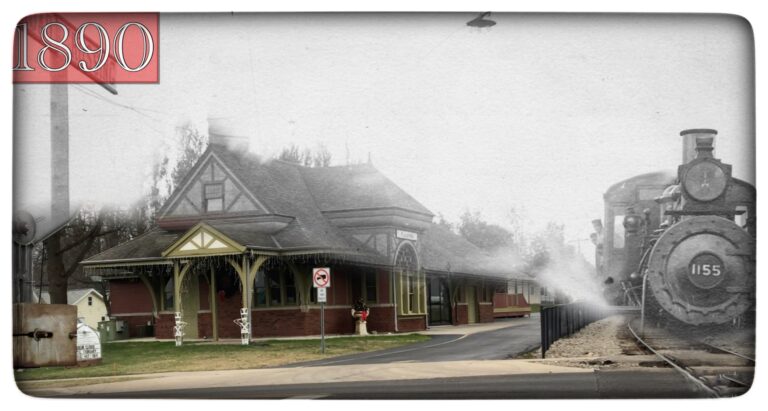Full Steam Ahead: The History and Settlement of Mid-Michigan

TimeShift from Flushing Train Depot - 1890
This journey through time takes us back to a mid-Michigan train station in 1890. The railroad tracks laid across this area would contribute greatly to the economic, population, and cultural growth of the State. The TimeShift focuses on the community of Flushing, Michigan and its surrounding areas, as well as some unique individuals that influenced the city, state, and the nation.
From the pioneer days of the Michigan Territory through the age of steam, individuals and families flowed into Genesee County for their own pursuit of wealth and happiness. Some built up the land, controlled the rivers for their mills, and laid iron tracks across the state. Some came and went, while others stayed.
In addition to some of the interesting immigrants to the State, Ms. Cornelia Moots, a Flushing native, left the area to preach progressive political ideas and comforted injured soldiers a world away. Flushing was forever changed when Joe Gage missed his train out of town. The son of former slaves, Joe was a man of many talents, and has a story unlike that of any other.
Many historically significant topics are covered. They include the social, political, economic and cultural changes affecting Michigan during the 19th century. Also examined are the demographic and economic impacts of steam power, the growth of railroads, and the role of individuals in shaping history.
Whether they arrived on foot, horseback, boat, or on a steam-powered train at the Flushing Train Depot, we explore how the people, and nearby places, were influenced by the land’s geography, economy, politics, and culture.
LOCATION
QUICK FACTS
Flushing originated as a mill town in the mid-1830s. Its location along the Flint River, the county’s largest river, was a decisive factor in its settlement.
The name “Dover” originally was selected for the new village until it was discovered that the name already was in use in Lenawee County.
The railroad was first brought to Flushing in 1888. Headed by John Ashley, the Toledo and Ann Arbor Railroad connected Flushing to Durand and Saginaw. Construction reached Flushing in July 1888. On Monday, Dec. 17, 1888, the first passenger train arrived from Saginaw. The fare was 80 cents.
Pollution along the Flint River was once a problem but has vastly improved since the 1950s and 1960s after the Clean Water Act was enacted. The river is now a popular place for fishing, canoeing and kayaking.
Right To vote
The Women’s Suffrage movement started to gather steam in 1848. The efforts of people, such as Flushing native Cornelia Moots, saw the Federal Government’s passage of the 19th Amendment to the Constitution in 1920.
Railroads and Mid-Michigan's Growth
Michigan’s first railroad connected Toledo, OH with Adrian, MI in the 1830s. What followed was an escalation of railroad construction across the State. Ribbons of steel were laid from east to west, connecting Lake Huron to Lake Michigan. In the 1870s the railroads started forging northward to towns such as Traverse City, Cheboygan, and into the Upper Peninsula. The advent of the motorcar in the early 1900s saw the railroads falling out of favor with the travelling public.
Today, discussions are underway to rethink and revitalize the train network in the State of Michigan as part of a modern public transportation system. In the video below you’ll watch and learn about efforts to bring passenger train travel back to Michigan, starting with a line connecting Ann Arbor to Traverse City.
Quick Quiz

Time's up